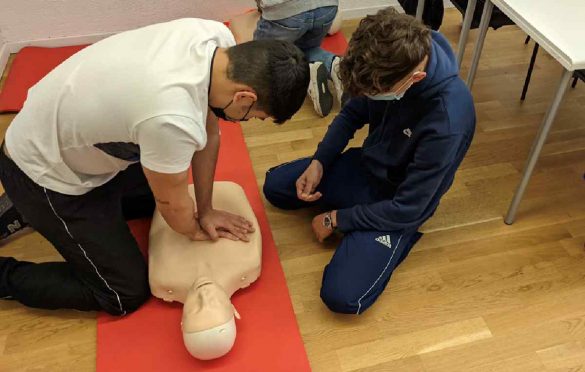What are the 10 steps to CPR?

CPR is an emergency procedure that is performed in order to keep the heart and brain alive when someone’s breathing or heartbeat has stopped. Did you know that CPR can be performed on adults, children, and infants? It’s a good idea to learn CPR so that you’ll be prepared in case of an emergency.
Table of Contents
The seven steps of CPR are:
1. Call 911 or the local emergency number.
The first step is to call for help. If you’re alone, call 911 or your local emergency number immediately. If someone else is with you, have them make the call while you begin performing CPR.
2. Check for breathing.
Once you’ve called for help, check to see if the person is breathing normally. Look for signs of chest rise and fall and listen for breaths.
3. If the person is not breathing, begin CPR.
If the person is not breathing normally, it’s time to start performing CPR. You can do chest compressions and rescue breaths, or you can do hands-only CPR.
4. Start with chest compressions.
To do chest compressions, place your hands in the center of the person’s chest and push down. Push hard and fast, at a rate of 100-120 compressions per minute. Also, be sure to allow the person’s chest to rise fully between compressions.
5. Give rescue breaths.
After 30 chest compressions, give two rescue breaths. To do this, tilt the person’s head back and lift their chin up. Pinch their nose shut and place your mouth over theirs. Breathe out slowly and evenly until you see the person’s chest rise.
6. Repeat steps four and five.
Continue performing chest compressions and rescue breaths, in cycles of 30 compressions and two breaths, until help arrives or the person begins to breathe on their own. Also, be sure to switch between rescuers every two minutes to avoid fatigue.
7. Check for signs of life.
Once help arrives, they will check the person for signs of life, such as a pulse or breathing. If the person has started to breathe on their own, continue monitoring them until medical help arrives.
8. If the person is still not breathing, continue CPR.
If the person has not started to breathe on their own, continue performing CPR until medical help arrives.
9. Monitor the person closely.
Even if the person begins to breathe on their own, it’s important to monitor them closely and watch for any changes in their condition. Also, be sure to stay with the person until medical help arrives.
10. Get help if you’re tired.
If you become tired while performing CPR, it’s important to get help from another rescuer or to call 911 so that someone else can take over. It’s also a good idea to have someone else call for medical help while you’re performing CPR.
5 Things you should know about CPR
1. You can learn how to do CPR in just a few minutes. There are many resources available that can teach you how to perform, such as online courses, videos, and classes at your local community center or hospital.
2. The techniques may vary slightly depending on the age of the person, but the goal is always to keep the heart and brain alive.
3. CPR can be performed with or without rescue breaths. If you’re not comfortable performing rescue breaths, you can still perform chest compressions-only [CPR].
4. Chest compressions should be performed at a rate of 100-120 per minute.
5. It’s important to switch between rescuers every two minutes to avoid fatigue. If you become tired while performing CPR, get help from another rescuer or call 911 so that someone else can take over.
We hope this article has been helpful in teaching you the basics of CPR. Remember, CPR is a life-saving technique that can be the difference between life and death in an emergency situation. If you ever find yourself in a situation where someone needs CPR, don’t hesitate to step in and help.


